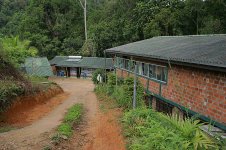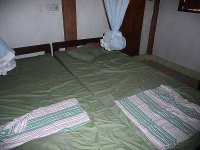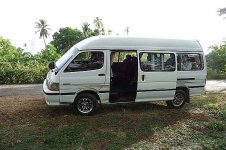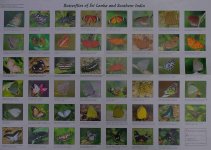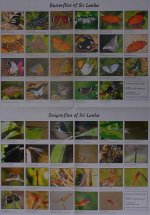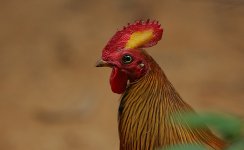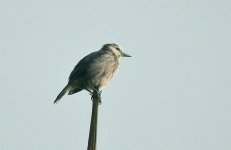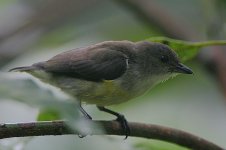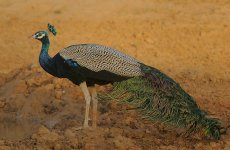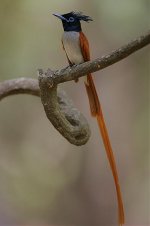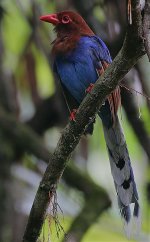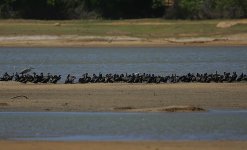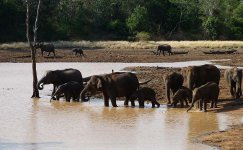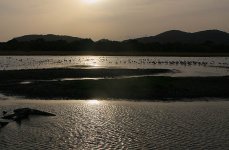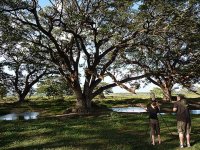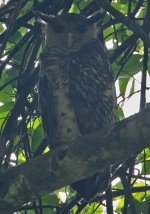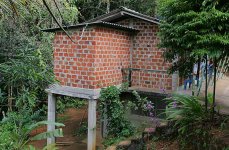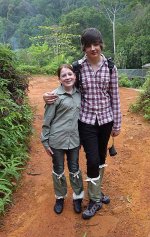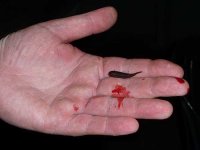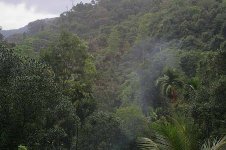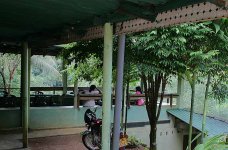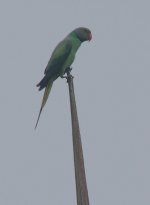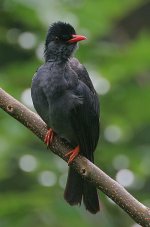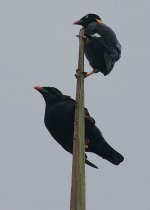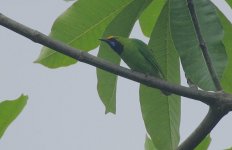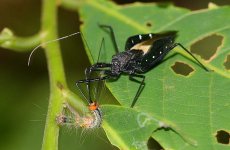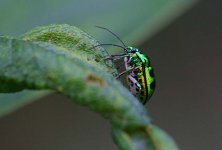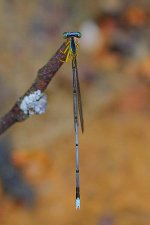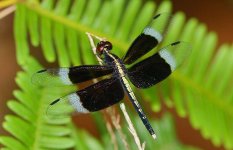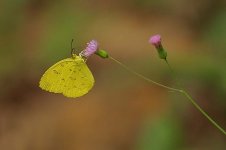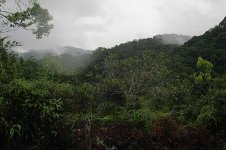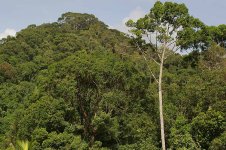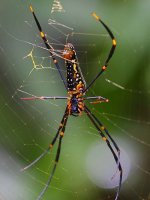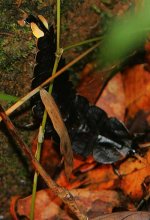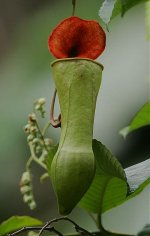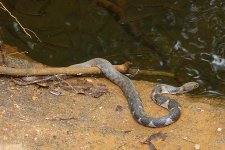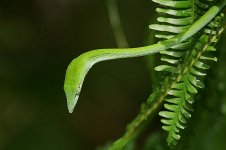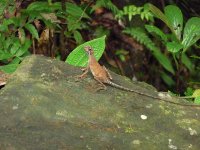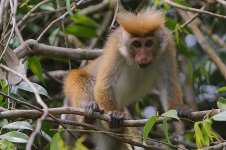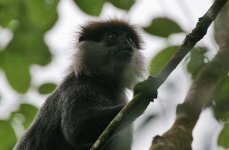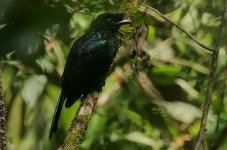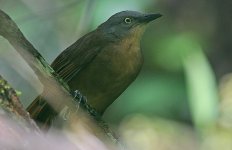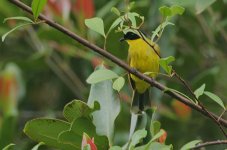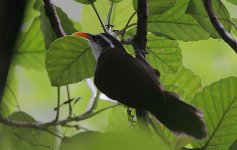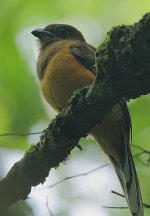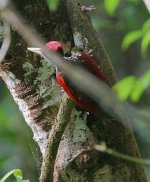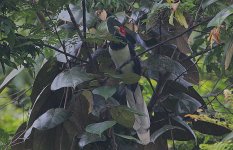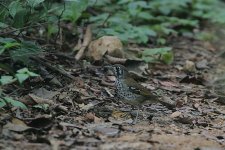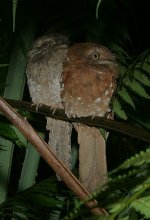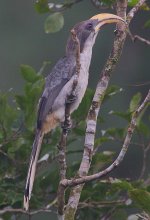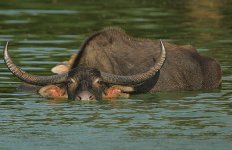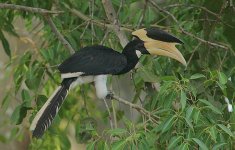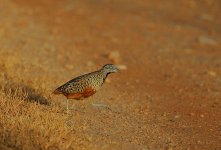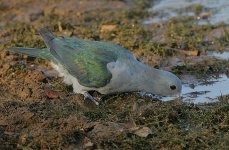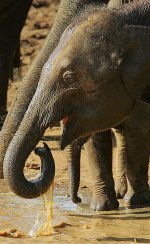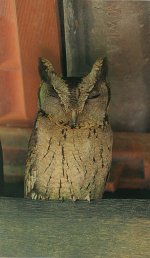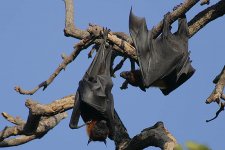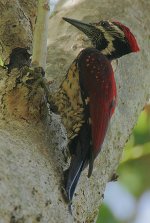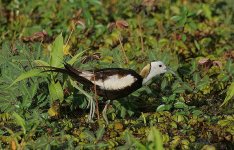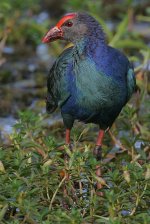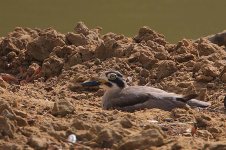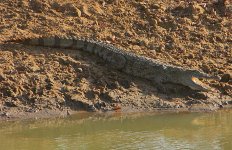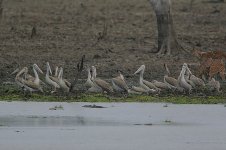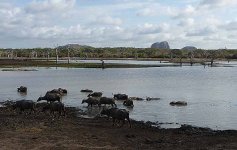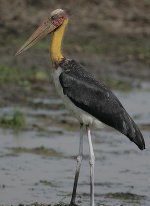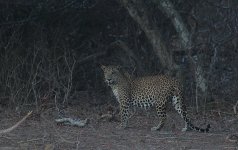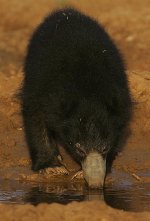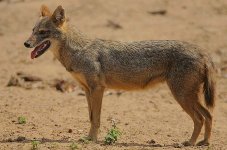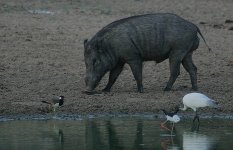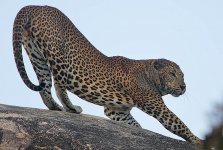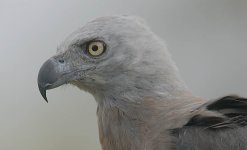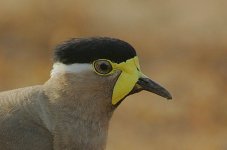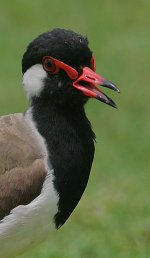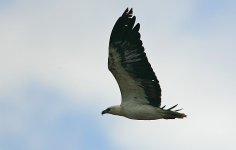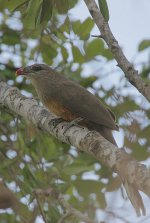Steve G
RAINBIRDER
Apologies in advance for the length of this first section but hopefully the information contained will be of some use.
PART 1: Organizing the itinerary, how many endemics and what’s the point of Martin’s place?
Over the last few years I’ve tried to organise summer holidays which have offered interesting activities, different cultural experiences and good wildlife viewing opportunities for the family whilst at the same time giving the prospect of some good birding for me. We have been to various places in Europe, as well as to the Americas, the Caribbean and to Africa but had never been to anywhere in Asia. We decided it was time we headed east and in the autumn of 2008 my wife & I looked at a number of possible options (including Malaysia, Thailand & Malaysian Borneo) before settling on Sri Lanka. Sri Lanka seemed to offer a little bit of everything and in late 2008 the longstanding civil war had almost fizzled out (or so we thought!). However we had barely bought our flight tickets and paid the deposit on our accommodation/ground travel when the troubles between the Tamil Tigers (LTTE) and the Sri Lankan military degenerated into outright war. The fighting intensified and the Sri Lankan military quickly gained the upper hand bringing hostilities to an abrupt end in May 2009 leaving reports filtering through of large numbers of civilian deaths and considerable deprivation. This left us with the double dilemma of: was it safe to travel to Sri Lanka with our kids? And was it ethical to visit the country at all given the recent events? We obtained advice from The British High Commission in Sri Lanka & from our ground agent who both confirmed that it was safe to travel to Sri Lanka whilst information began to come through about Tamil civilians being liberated by the Sri Lankan army who had been used by the LTTE as a human shield and of increased efforts taken by the Sri Lankan military to restore local infrastructure and provide aid to the civilian population. We therefore decided to go and as a result had a truly fantastic and enjoyable time.
We flew with Emirates from Glasgow via Dubai to Colombo. The tickets were bought on the internet from Holiday Genie (which saved us a total of £600 on the same tickets bought directly from Emirates) -the only downside was that we couldn’t use online check-in -which proved no great disadvantage. The Emirates economy seats had plenty of room, their electronic entertainment system was second to none, the food was of a good standard, the drinks plentiful & the staff very obliging & helpful. As we were flying with Emirates throughout there was no luggage hassle on switching flights at Dubai. All Emirates flights are through terminal 3 at Dubai which is a very straightforward terminal to negotiate. Even at midnight there were plenty of shops & restaurants open (take some US dollars –which are universally accepted) whilst the facilities were plentiful and well-serviced. We were met at Colombo airport by our guide, we changed currency quickly & painlessly in the airport arrivals hall and then transferred to our mini-bus without hassle.
Initially we had no real idea about a suitable itinerary for Sri Lanka. My daughter wanted to see wild elephants (including youngsters) & ride on the back of an elephant. My son wanted to see elephants, try his hand at macro-photography of bugs & butterflies and eat as many curries as possible! My wife wanted to check out some of the historic ruins and experience the varied landscapes of the country including undertaking some scenic walks. I wanted to see as many endemic birds as possible and hopefully even photograph a few, whilst all of us agreed that we would love to see a wild leopard if possible. After some initial online research we organised our itinerary, accommodation and all ground arrangements through Jetwing Eco Holidays ( www.jetwingeco.com/ ) who were simply superb. A very rough holiday plan was emailed through to the Jetwing Eco office and various modified options and suggestions were promptly returned. The staff at Jetwing –particularly Ajanthan and Paramie were brilliant & very patient. They very tactfully dealt with my stupid requests and patiently handled my repeated changes to the itinerary offering pragmatic solutions to any apparent problems. Eventually we settled on an itinerary which included six different bases covering the cultural triangle in the north, two separate hill country sites, Yala National Park and the Sinharaja rain forest whilst our last day was a chillout on the beach at Negombo (near the airport). This itinerary proved the best for us as a family though serious birders would perhaps reduce time at Yala & Negombo in favour of including a couple of days at Kithulgala to maximise on the chances of seeing some of the more difficult endemics.
As well as organising our itinerary and booking all accommodation (half-board), Jetwing supplied us with a spacious air-conditioned mini-bus, a dedicated driver (driving in Sri Lanka is not for the faint-hearted –don’t be tempted to drive yourself!) and a naturalist-guide. Having scoured the trip reports in advance I noted that Jetwing employ a number of very competent naturalist guides but the names Wicky & Hetti were repeatedly singled out for praise. We were very fortunate to have the services of Mr C. Wickramasekara –known to his friends, colleagues & clients as “Wicky”. We also briefly met “Hetti” on our travels, who clearly is also a very personable and knowledgeable guide.
Wicky was quite simply a fantastic guide. He has a great deal of knowledge covering birds, butterflies, bugs, mammals and other wildlife. He has an uncanny ability to predict what is about to unfold so that we were always in the right place at the right time (and secretly asking ourselves how does he do that?). He has excellent knowledge of Sri Lankan cultural sites, has great people skills and endless patience. His civility and pleasant interaction with local people greatly impressed me –on the few occasions when we came upon people in genuine hardship Wicky was always the first to open his wallet and offer help. Another impressive trait is his genuine belief that the welfare of the birds is paramount. Utilising his considerable fieldcraft we again and again managed to see target birds without hounding them or trashing their habitat. He seldom used tape-luring (and never within the National Parks) and when he did the use was limited and tailored to the response of the bird. He also advised that he was not prepared to tape-lure Sri Lanka Spurfowl as they were actively breeding (july-september) and susceptible to disturbance at this time –whilst this effectively meant that we had no chance of seeing this bird I was pleased to see where his priorities lie!! In short Wicky is a great guy with endless patience, a great sense of humour, considerable skills and an extremely pleasant personality –I have no hesitation in stating that his contribution turned what would have been a good holiday into a superb one!!!
All of our hotel accommodation was of an excellent standard except at Sinharaja. Whilst the south-western wet zone of Sri Lanka still holds some large tracts of forest most of this is degraded or secondary growth forest. The largest area of pristine primary rain forest in Sri Lanka is at Sinharaja which is a must-visit site. Unfortunately access to the rain forest reserve is along a rough-hewn track which can only be negotiated slowly by a high-clearance 4-wheel drive vehicle. From the nearest good quality hotel it can take almost 2 hours to get to the entrance gate of the Sinharaja Rain Forest reserve and so the only viable option is to stay at Martin’s Simple lodge (only a five minute walk from the reserve entrance) which as the name suggests is somewhat basic. Martin’s place comprises of basic rooms containing simple beds with a mosquito net and an adjoining bathroom containing a simple shower (there is hot water from mid-morning, once the solar panels have warmed up) and fully-functional flush toilets. The bed-linen & the rooms are clean with surprisingly few insects (courtesy of the House Geckoes) and there is power for most of the day (there are of course no ceiling fans or air-con but whilst humid we didn’t find it overly hot). Meals are served in a small basic open-sided restaurant area which commands fantastic views down the valley over the adjacent rain forest. Breakfast invariably consists of bread (from the previous day –a toaster would make all the difference Martin!), margarine, jams and fried eggs. Lunch and evening meals are much more substantial and tasty affairs with an array of vegetable curries, string hoppers (noodles), coconut samba & poppadoms. I mention all this as staying at Martin’s place is almost compulsory for serious rain forest birding -but it does help to know what to expect in advance. Martin’s lodge is simple accommodation which doesn’t claim to be anything else -but it is clean, the food is very acceptable and nobody in our party moaned about staying there. The point is that Martin’s Place really is a necessity if you want to explore Sinharaja and though very much like a youth hostel it should be your first priority when booking accommodation for a Sri Lankan trip!
Jetwing Eco publish a number of very useful booklets & ID guides. On first entering our mini-bus we were given two packs containing various goodies including Butterfly & Dragonfly ID posters a “Mammals of Sri Lanka” photo ID guide and a “Birds of Sri Lanka Pictorial Guide & Checklist” –all of which were of considerable use.
SRI LANKAN ENDEMICS
Whilst Sri Lanka holds good numbers of easy-to-see waterbirds & raptors amongst others it is the endemic birds which prove the greatest attraction to visiting birders and clearly Sri Lanka is in avian biodiversity hot spot –but just how many Sri Lankan endemics are there? Some authorities recognise 24 species, some 26 & others 33. The 24 for which there seems little dispute are:
Sri Lanka Junglefowl
Sri Lanka Spurfowl
Sri Lanka Wood Pigeon
Sri Lanka Hanging Parrot
Layard’s Parakeet
Red-faced Malkoha
Green-billed Coucal
Serendib Scops Owl
Chestnut-backed Owlet
Sri Lanka Grey Hornbill
Yellow-fronted Barbet
Yellow-eared Bulbul
Sri Lanka Whistling Thrush
Spot-winged Thrush
Brown-capped Babbler
Orange-billed Babbler
Ashy-headed Laughingthrush
Sri Lanka Bush Warbler
Dull blue Flycatcher
White-throated Flowerpecker
Sri Lanka White-eye
Sri Lanka Magpie
Sri Lanka Myna
White-faced Starling
-these are the endemics listed in BF’s Opus. Following the publication of “Ripley’s Guide to the Birds of the Indian Subcontinent” published by Rasmussen and Anderton (2005) a further 9 endemic species were proposed. Sri Lanka Scaly Thrush (Collar, 2004) is apparently quite distinct from the mainland Zoothera dauma and is receiving increased support for specific status. The Sri Lanka Scimitar Babbler (Collar, 2005) is also now being increasingly treated as separate from Indian Scimitar Babbler. The other “debated” endemics are Sri Lanka Green Pigeon (=Pompadour Green Pigeon), Ceylon Small Barbet (=Crimson-fronted Barbet), Crimson-backed Flameback (=Greater Flameback), Sri Lanka Woodshrike (=Common Woodshrike), Sri Lanka Swallow (=Red-rumped Swallow), Black-headed Yellow Bulbul (=Black-crested Bulbul) and Sri Lanka Crested Drongo (=Greater racket-tailed Drongo). Whilst I’m not sure of the validity of these proposed splits it clearly made good sense to try and see as many of them as possible. Certainly the Crested Drongos we saw at Sinharaja were clearly very different in appearance and behaviour from the Greater racket-tailed Drongos we saw in Minnereya National Park whilst the Sri Lankan Black-headed Yellow Bulbuls also appeared very different from the images I have seen of the typical black-crested birds found in other parts of southern Asia.
PART 1: Organizing the itinerary, how many endemics and what’s the point of Martin’s place?
Over the last few years I’ve tried to organise summer holidays which have offered interesting activities, different cultural experiences and good wildlife viewing opportunities for the family whilst at the same time giving the prospect of some good birding for me. We have been to various places in Europe, as well as to the Americas, the Caribbean and to Africa but had never been to anywhere in Asia. We decided it was time we headed east and in the autumn of 2008 my wife & I looked at a number of possible options (including Malaysia, Thailand & Malaysian Borneo) before settling on Sri Lanka. Sri Lanka seemed to offer a little bit of everything and in late 2008 the longstanding civil war had almost fizzled out (or so we thought!). However we had barely bought our flight tickets and paid the deposit on our accommodation/ground travel when the troubles between the Tamil Tigers (LTTE) and the Sri Lankan military degenerated into outright war. The fighting intensified and the Sri Lankan military quickly gained the upper hand bringing hostilities to an abrupt end in May 2009 leaving reports filtering through of large numbers of civilian deaths and considerable deprivation. This left us with the double dilemma of: was it safe to travel to Sri Lanka with our kids? And was it ethical to visit the country at all given the recent events? We obtained advice from The British High Commission in Sri Lanka & from our ground agent who both confirmed that it was safe to travel to Sri Lanka whilst information began to come through about Tamil civilians being liberated by the Sri Lankan army who had been used by the LTTE as a human shield and of increased efforts taken by the Sri Lankan military to restore local infrastructure and provide aid to the civilian population. We therefore decided to go and as a result had a truly fantastic and enjoyable time.
We flew with Emirates from Glasgow via Dubai to Colombo. The tickets were bought on the internet from Holiday Genie (which saved us a total of £600 on the same tickets bought directly from Emirates) -the only downside was that we couldn’t use online check-in -which proved no great disadvantage. The Emirates economy seats had plenty of room, their electronic entertainment system was second to none, the food was of a good standard, the drinks plentiful & the staff very obliging & helpful. As we were flying with Emirates throughout there was no luggage hassle on switching flights at Dubai. All Emirates flights are through terminal 3 at Dubai which is a very straightforward terminal to negotiate. Even at midnight there were plenty of shops & restaurants open (take some US dollars –which are universally accepted) whilst the facilities were plentiful and well-serviced. We were met at Colombo airport by our guide, we changed currency quickly & painlessly in the airport arrivals hall and then transferred to our mini-bus without hassle.
Initially we had no real idea about a suitable itinerary for Sri Lanka. My daughter wanted to see wild elephants (including youngsters) & ride on the back of an elephant. My son wanted to see elephants, try his hand at macro-photography of bugs & butterflies and eat as many curries as possible! My wife wanted to check out some of the historic ruins and experience the varied landscapes of the country including undertaking some scenic walks. I wanted to see as many endemic birds as possible and hopefully even photograph a few, whilst all of us agreed that we would love to see a wild leopard if possible. After some initial online research we organised our itinerary, accommodation and all ground arrangements through Jetwing Eco Holidays ( www.jetwingeco.com/ ) who were simply superb. A very rough holiday plan was emailed through to the Jetwing Eco office and various modified options and suggestions were promptly returned. The staff at Jetwing –particularly Ajanthan and Paramie were brilliant & very patient. They very tactfully dealt with my stupid requests and patiently handled my repeated changes to the itinerary offering pragmatic solutions to any apparent problems. Eventually we settled on an itinerary which included six different bases covering the cultural triangle in the north, two separate hill country sites, Yala National Park and the Sinharaja rain forest whilst our last day was a chillout on the beach at Negombo (near the airport). This itinerary proved the best for us as a family though serious birders would perhaps reduce time at Yala & Negombo in favour of including a couple of days at Kithulgala to maximise on the chances of seeing some of the more difficult endemics.
As well as organising our itinerary and booking all accommodation (half-board), Jetwing supplied us with a spacious air-conditioned mini-bus, a dedicated driver (driving in Sri Lanka is not for the faint-hearted –don’t be tempted to drive yourself!) and a naturalist-guide. Having scoured the trip reports in advance I noted that Jetwing employ a number of very competent naturalist guides but the names Wicky & Hetti were repeatedly singled out for praise. We were very fortunate to have the services of Mr C. Wickramasekara –known to his friends, colleagues & clients as “Wicky”. We also briefly met “Hetti” on our travels, who clearly is also a very personable and knowledgeable guide.
Wicky was quite simply a fantastic guide. He has a great deal of knowledge covering birds, butterflies, bugs, mammals and other wildlife. He has an uncanny ability to predict what is about to unfold so that we were always in the right place at the right time (and secretly asking ourselves how does he do that?). He has excellent knowledge of Sri Lankan cultural sites, has great people skills and endless patience. His civility and pleasant interaction with local people greatly impressed me –on the few occasions when we came upon people in genuine hardship Wicky was always the first to open his wallet and offer help. Another impressive trait is his genuine belief that the welfare of the birds is paramount. Utilising his considerable fieldcraft we again and again managed to see target birds without hounding them or trashing their habitat. He seldom used tape-luring (and never within the National Parks) and when he did the use was limited and tailored to the response of the bird. He also advised that he was not prepared to tape-lure Sri Lanka Spurfowl as they were actively breeding (july-september) and susceptible to disturbance at this time –whilst this effectively meant that we had no chance of seeing this bird I was pleased to see where his priorities lie!! In short Wicky is a great guy with endless patience, a great sense of humour, considerable skills and an extremely pleasant personality –I have no hesitation in stating that his contribution turned what would have been a good holiday into a superb one!!!
All of our hotel accommodation was of an excellent standard except at Sinharaja. Whilst the south-western wet zone of Sri Lanka still holds some large tracts of forest most of this is degraded or secondary growth forest. The largest area of pristine primary rain forest in Sri Lanka is at Sinharaja which is a must-visit site. Unfortunately access to the rain forest reserve is along a rough-hewn track which can only be negotiated slowly by a high-clearance 4-wheel drive vehicle. From the nearest good quality hotel it can take almost 2 hours to get to the entrance gate of the Sinharaja Rain Forest reserve and so the only viable option is to stay at Martin’s Simple lodge (only a five minute walk from the reserve entrance) which as the name suggests is somewhat basic. Martin’s place comprises of basic rooms containing simple beds with a mosquito net and an adjoining bathroom containing a simple shower (there is hot water from mid-morning, once the solar panels have warmed up) and fully-functional flush toilets. The bed-linen & the rooms are clean with surprisingly few insects (courtesy of the House Geckoes) and there is power for most of the day (there are of course no ceiling fans or air-con but whilst humid we didn’t find it overly hot). Meals are served in a small basic open-sided restaurant area which commands fantastic views down the valley over the adjacent rain forest. Breakfast invariably consists of bread (from the previous day –a toaster would make all the difference Martin!), margarine, jams and fried eggs. Lunch and evening meals are much more substantial and tasty affairs with an array of vegetable curries, string hoppers (noodles), coconut samba & poppadoms. I mention all this as staying at Martin’s place is almost compulsory for serious rain forest birding -but it does help to know what to expect in advance. Martin’s lodge is simple accommodation which doesn’t claim to be anything else -but it is clean, the food is very acceptable and nobody in our party moaned about staying there. The point is that Martin’s Place really is a necessity if you want to explore Sinharaja and though very much like a youth hostel it should be your first priority when booking accommodation for a Sri Lankan trip!
Jetwing Eco publish a number of very useful booklets & ID guides. On first entering our mini-bus we were given two packs containing various goodies including Butterfly & Dragonfly ID posters a “Mammals of Sri Lanka” photo ID guide and a “Birds of Sri Lanka Pictorial Guide & Checklist” –all of which were of considerable use.
SRI LANKAN ENDEMICS
Whilst Sri Lanka holds good numbers of easy-to-see waterbirds & raptors amongst others it is the endemic birds which prove the greatest attraction to visiting birders and clearly Sri Lanka is in avian biodiversity hot spot –but just how many Sri Lankan endemics are there? Some authorities recognise 24 species, some 26 & others 33. The 24 for which there seems little dispute are:
Sri Lanka Junglefowl
Sri Lanka Spurfowl
Sri Lanka Wood Pigeon
Sri Lanka Hanging Parrot
Layard’s Parakeet
Red-faced Malkoha
Green-billed Coucal
Serendib Scops Owl
Chestnut-backed Owlet
Sri Lanka Grey Hornbill
Yellow-fronted Barbet
Yellow-eared Bulbul
Sri Lanka Whistling Thrush
Spot-winged Thrush
Brown-capped Babbler
Orange-billed Babbler
Ashy-headed Laughingthrush
Sri Lanka Bush Warbler
Dull blue Flycatcher
White-throated Flowerpecker
Sri Lanka White-eye
Sri Lanka Magpie
Sri Lanka Myna
White-faced Starling
-these are the endemics listed in BF’s Opus. Following the publication of “Ripley’s Guide to the Birds of the Indian Subcontinent” published by Rasmussen and Anderton (2005) a further 9 endemic species were proposed. Sri Lanka Scaly Thrush (Collar, 2004) is apparently quite distinct from the mainland Zoothera dauma and is receiving increased support for specific status. The Sri Lanka Scimitar Babbler (Collar, 2005) is also now being increasingly treated as separate from Indian Scimitar Babbler. The other “debated” endemics are Sri Lanka Green Pigeon (=Pompadour Green Pigeon), Ceylon Small Barbet (=Crimson-fronted Barbet), Crimson-backed Flameback (=Greater Flameback), Sri Lanka Woodshrike (=Common Woodshrike), Sri Lanka Swallow (=Red-rumped Swallow), Black-headed Yellow Bulbul (=Black-crested Bulbul) and Sri Lanka Crested Drongo (=Greater racket-tailed Drongo). Whilst I’m not sure of the validity of these proposed splits it clearly made good sense to try and see as many of them as possible. Certainly the Crested Drongos we saw at Sinharaja were clearly very different in appearance and behaviour from the Greater racket-tailed Drongos we saw in Minnereya National Park whilst the Sri Lankan Black-headed Yellow Bulbuls also appeared very different from the images I have seen of the typical black-crested birds found in other parts of southern Asia.




